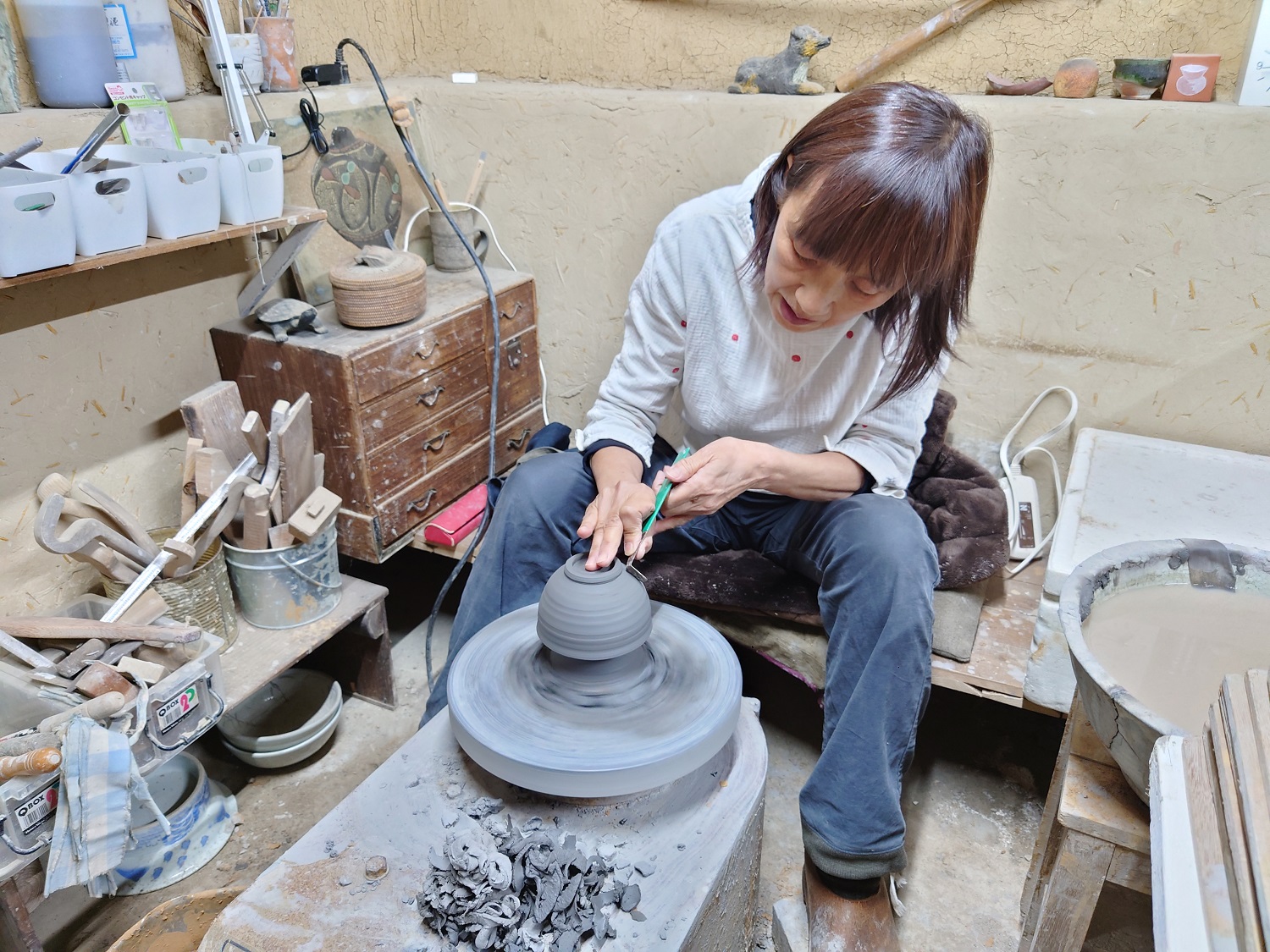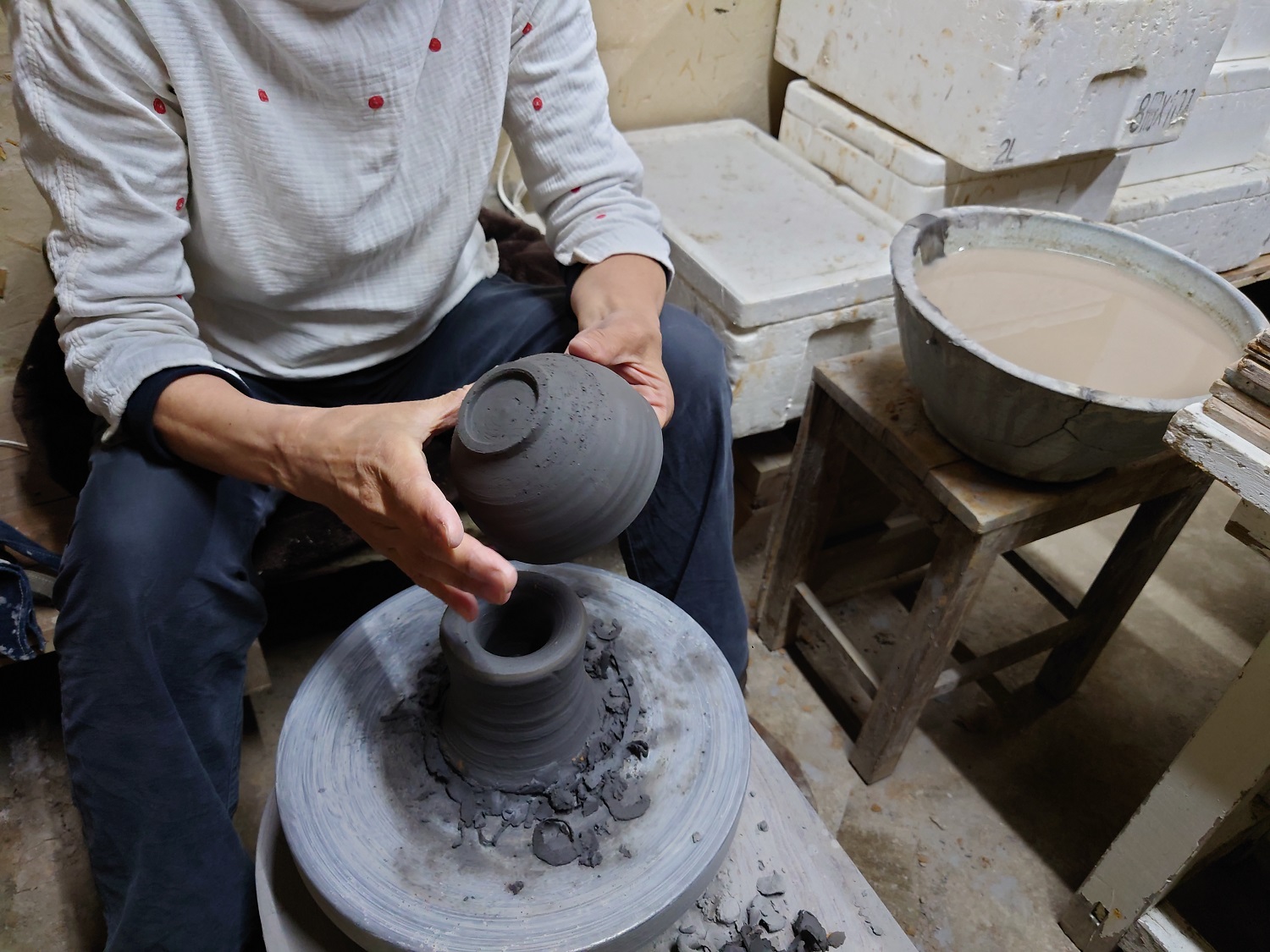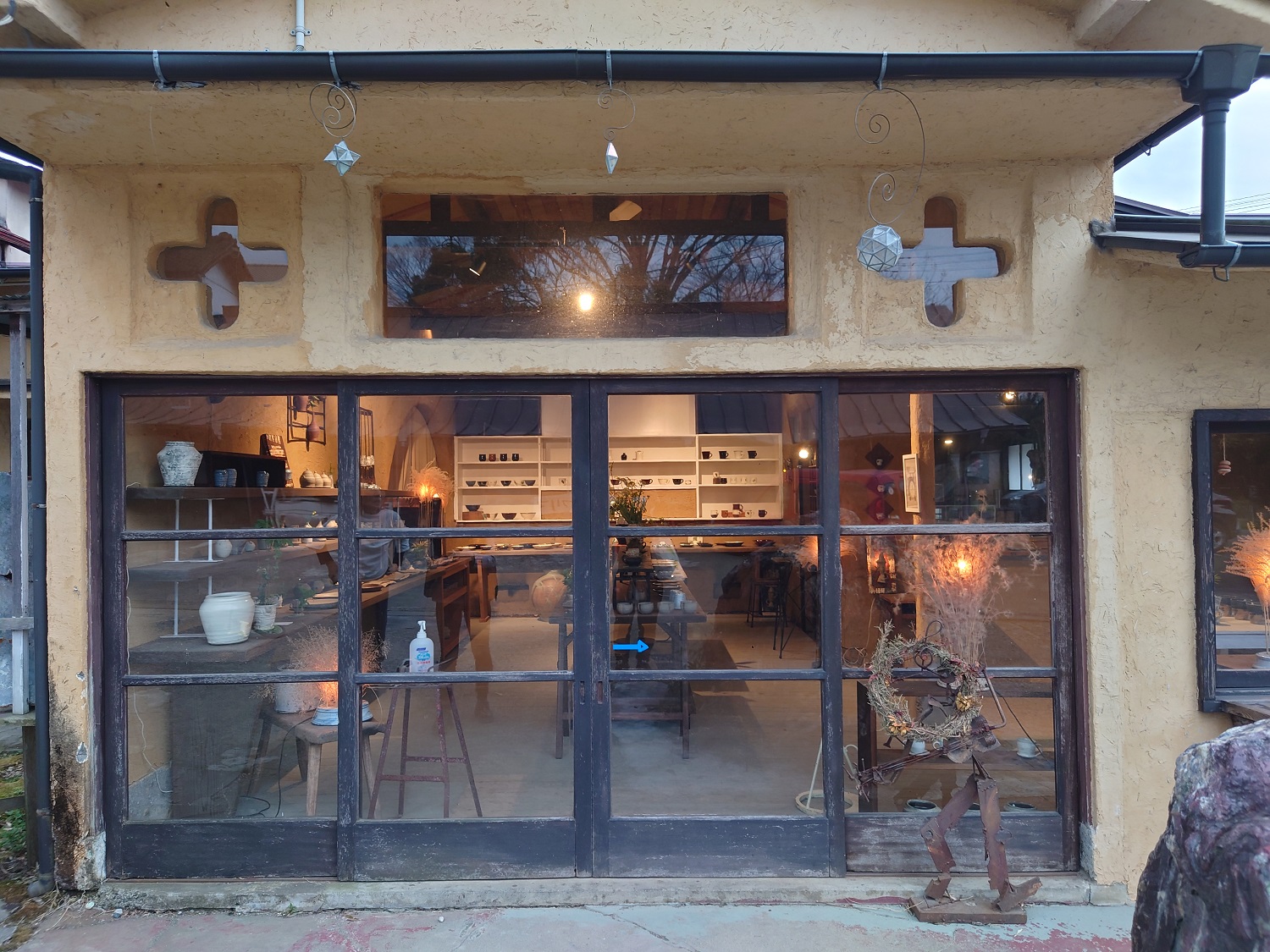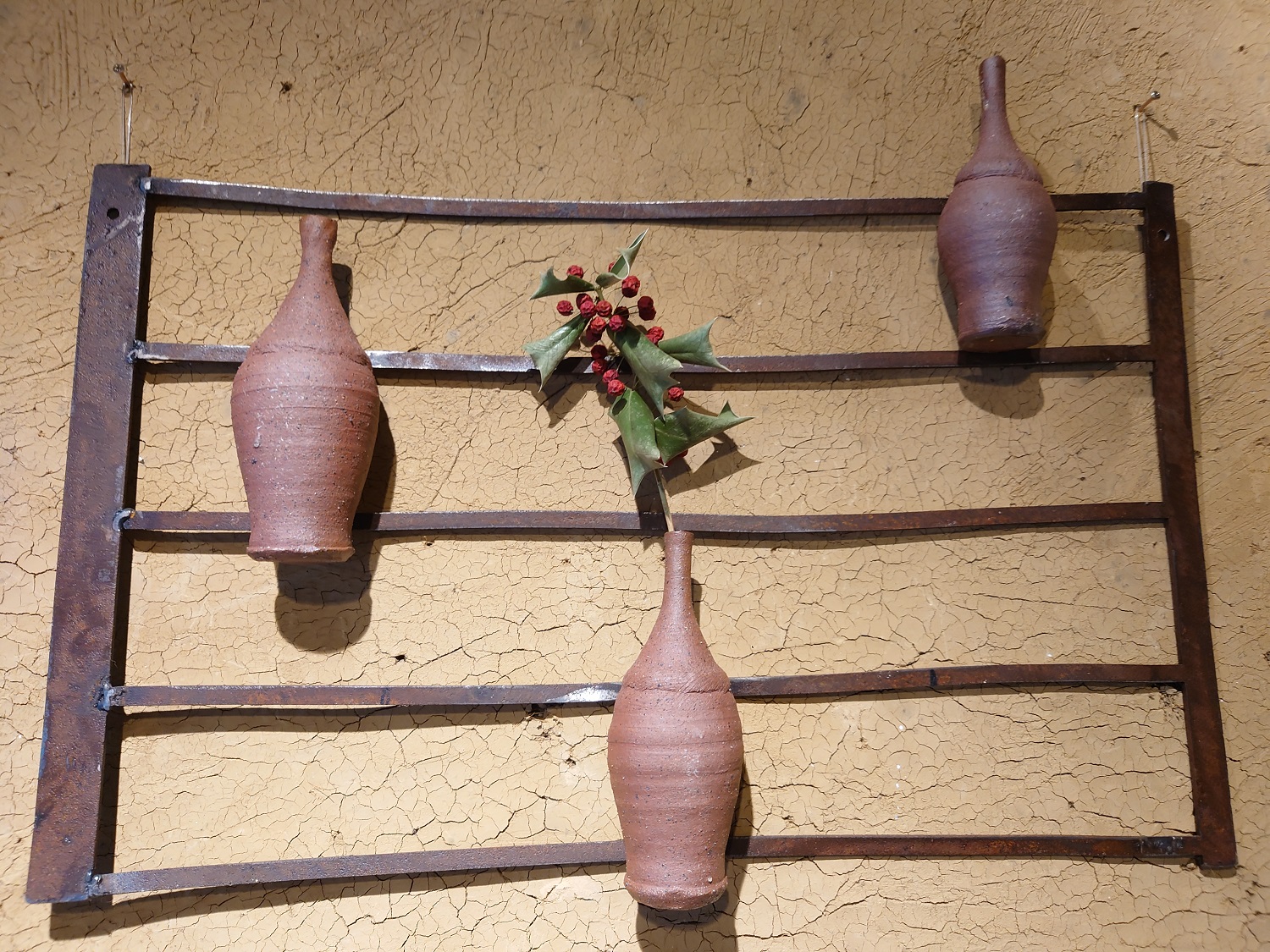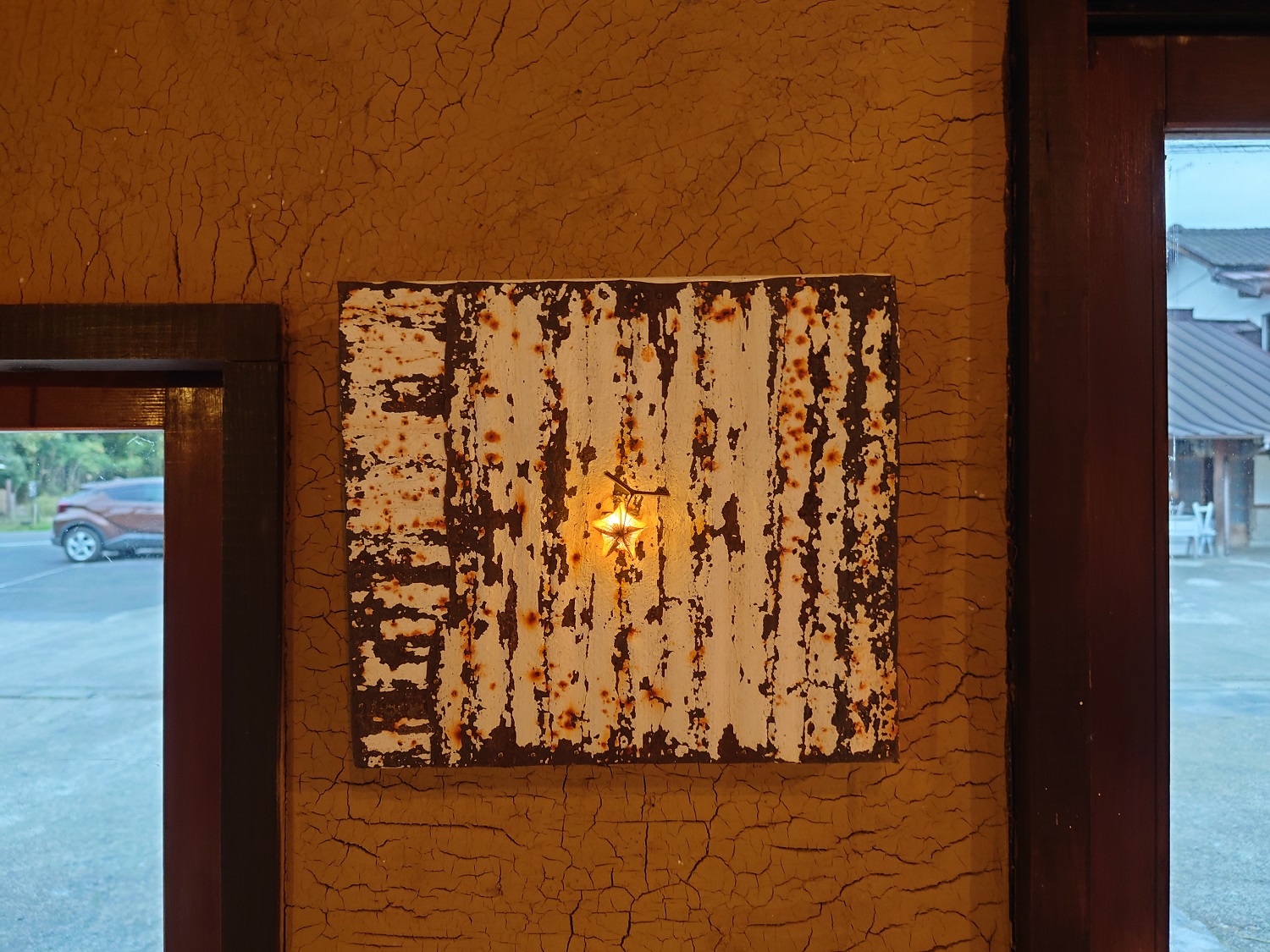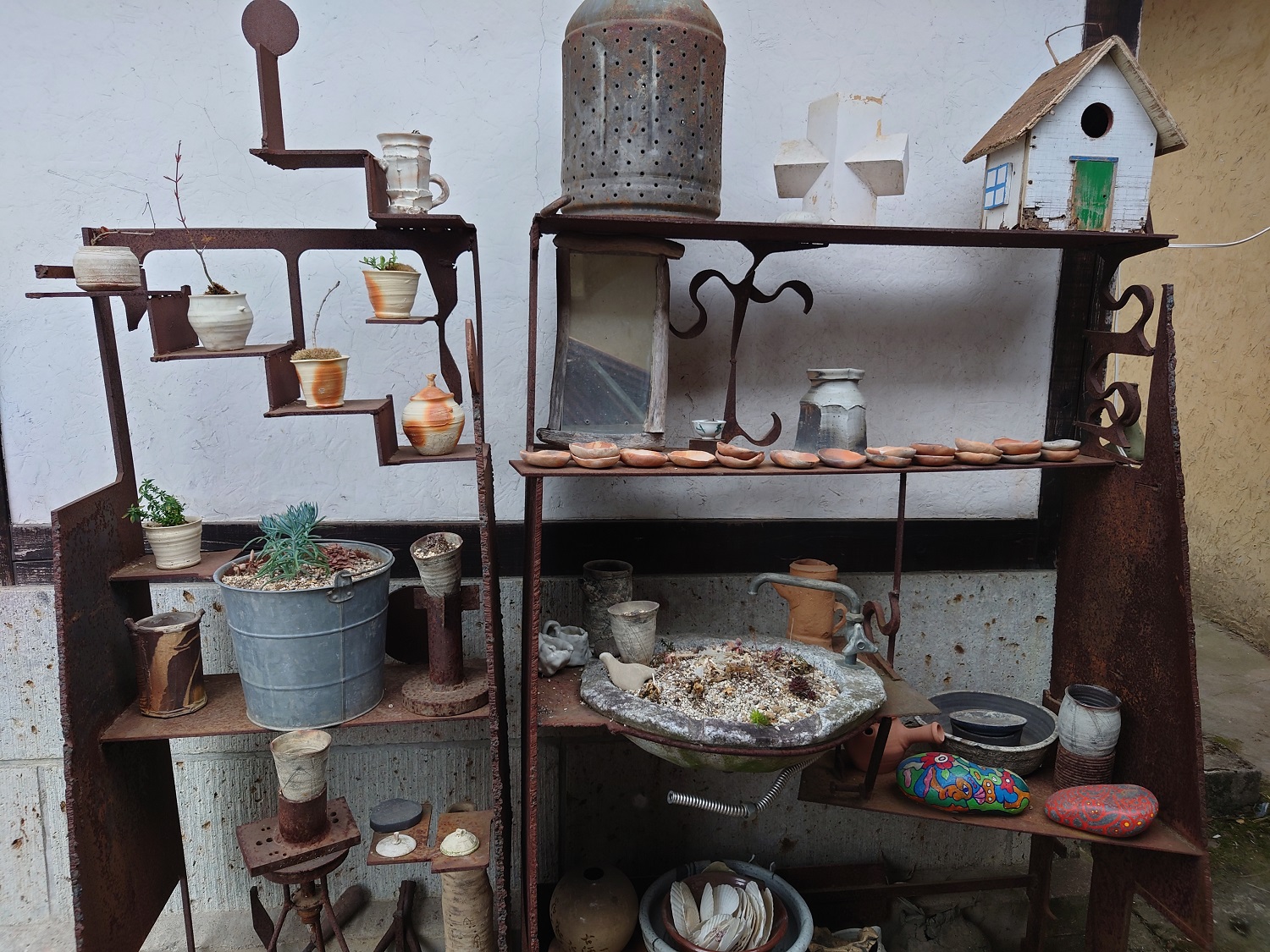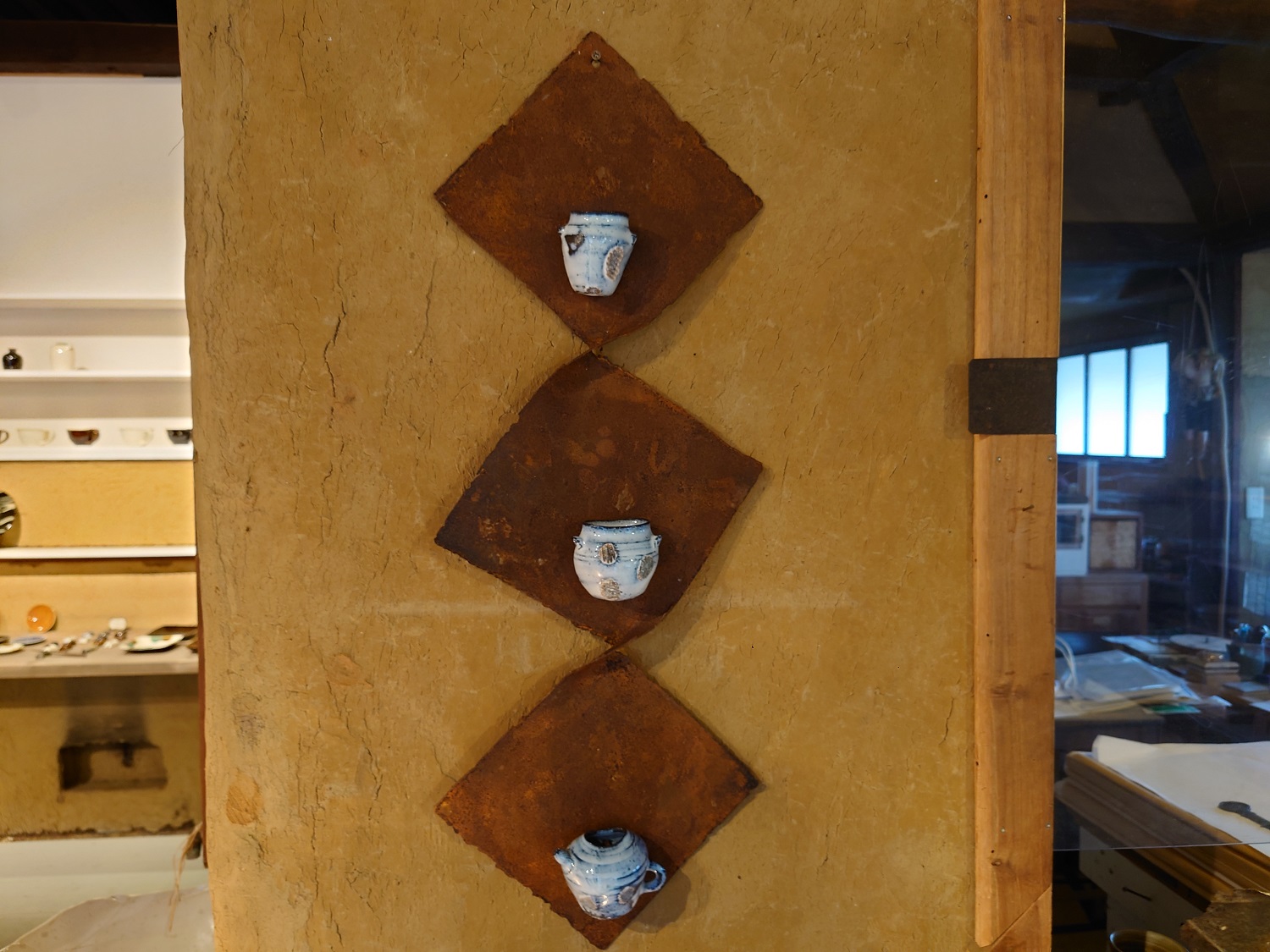Interview with Konomi Kenmoku,
a Japanese potter in MashikoTown
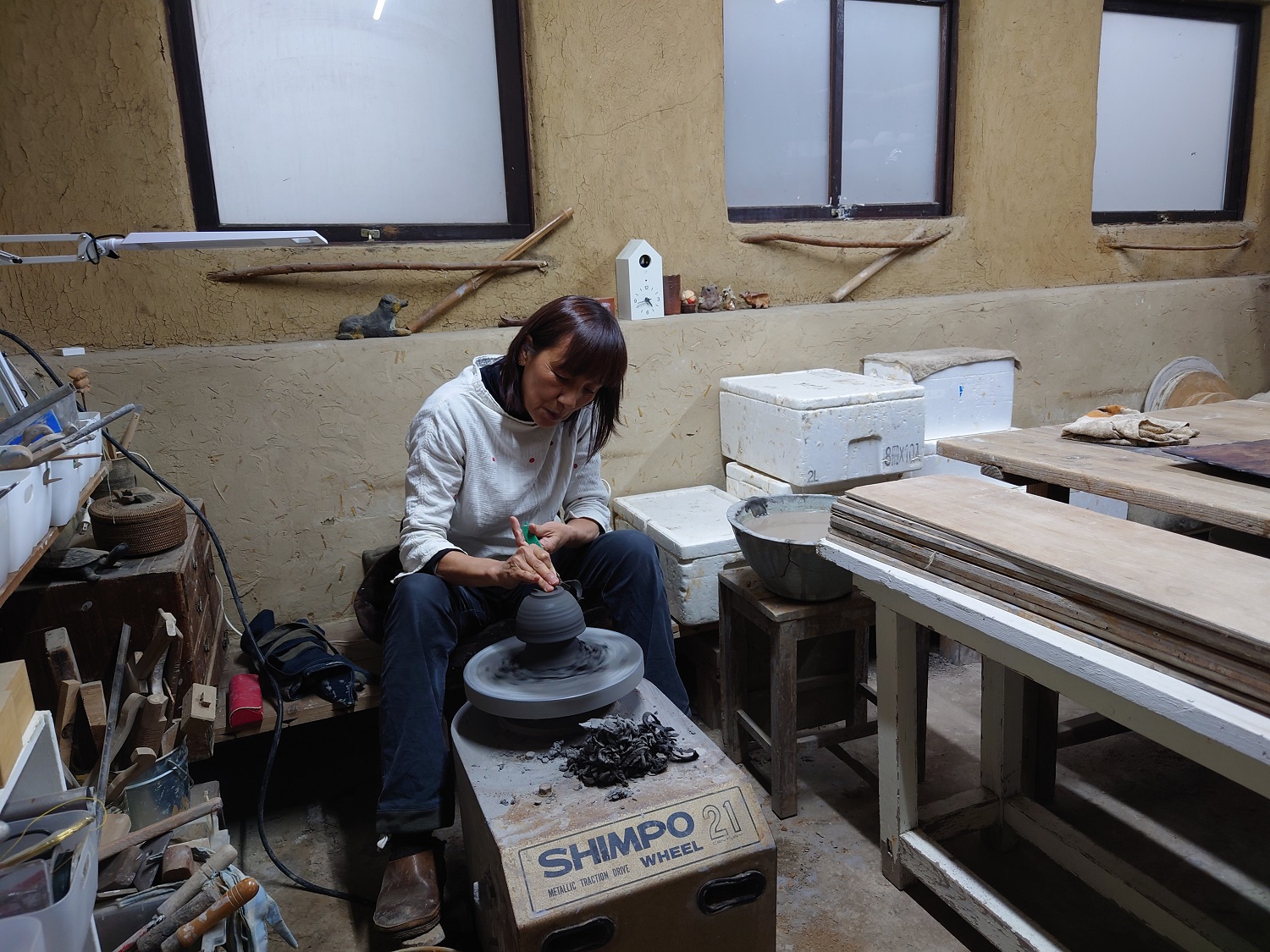
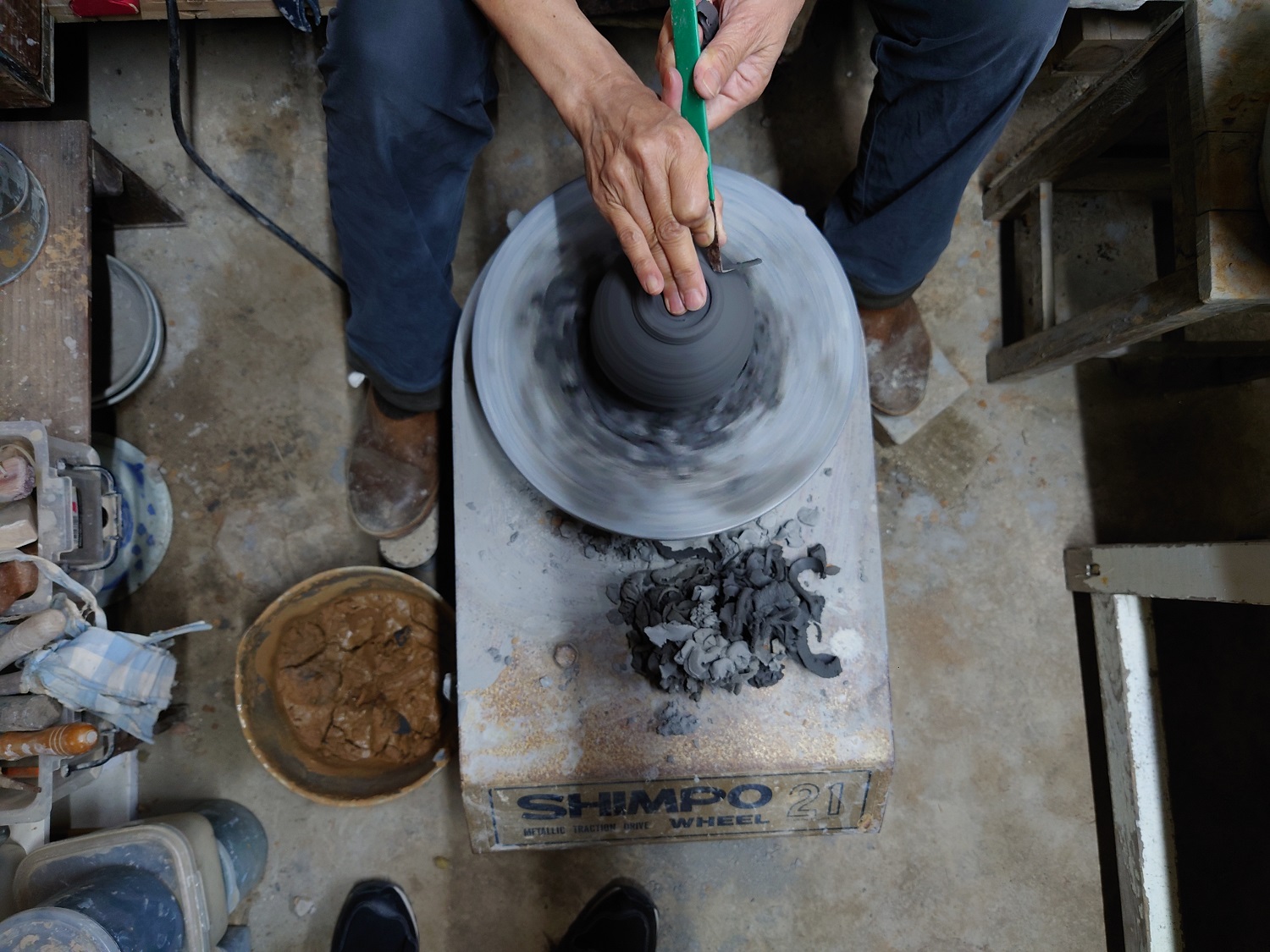
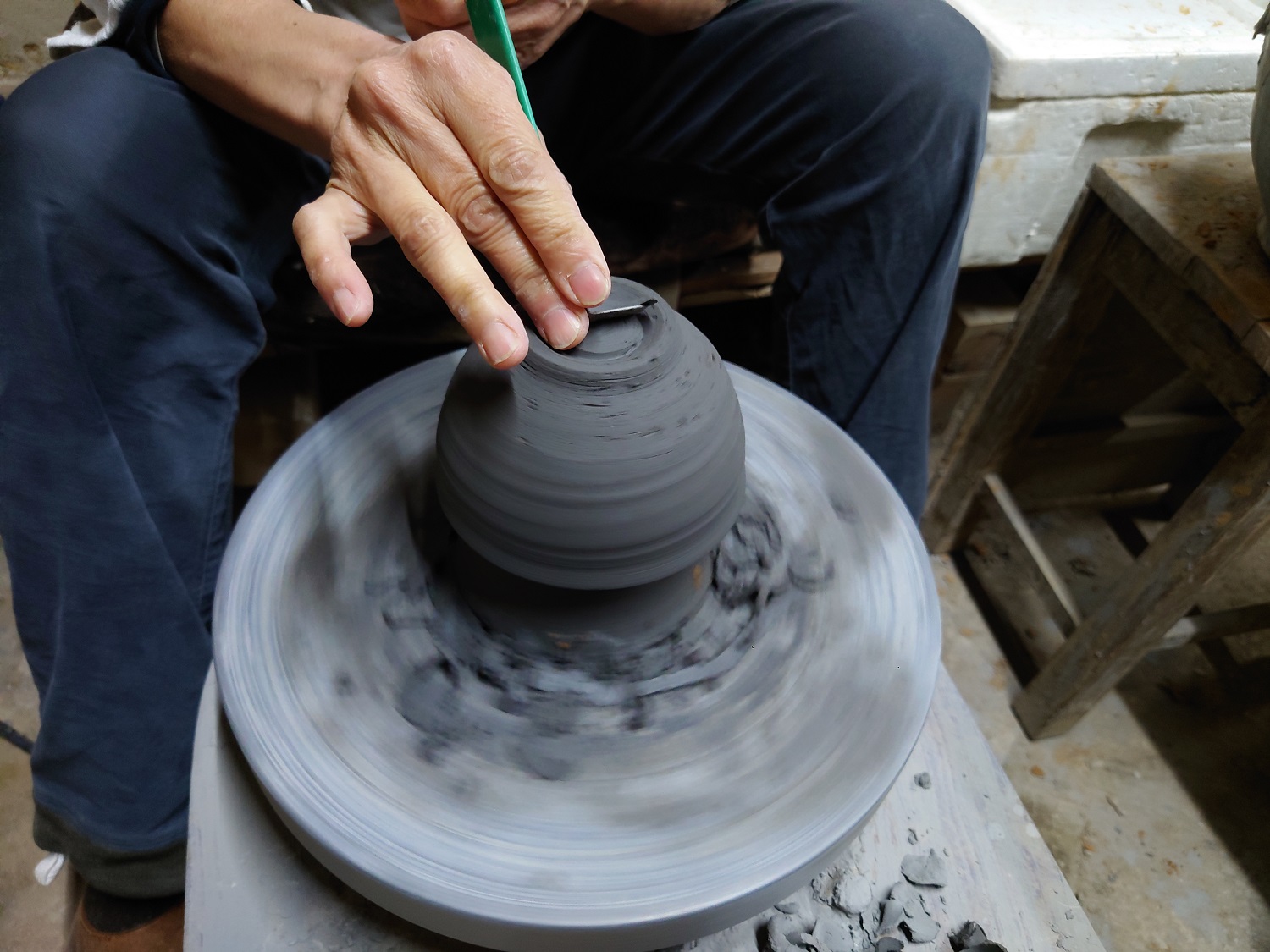
-- Could you tell us about how you became a ceramic artist?
Kenmoku: I was born in Komagome, Tokyo. My father is a sculptor, so I was often exposed to sculptures from a young age. My thinking was that if I did the same thing as my father, I wouldn't be able to express myself genuinely, and I wouldn't have been as good as him. My father worked with clay, but he never tried firing it. For him, firing clay was an unknown world. That is why I chose pottery.
In my senior year of high school, I wanted to go to an art college, and when I was trying to decide which one to attend, I found a page in an art college guide book introducing a new college that had opened just three years earlier. It was Kyoto Saga Art College. This was in the 1970s, of course. I was interested in living in Kyoto, and the mysterious world of a new college sounded very appealing to me, so I decided to attend Kyoto Saga Art College. My two years of college life were full of excitement. The school's culture promoted freedom and there were many very interesting teachers. At first, I was planning to get a teaching license, but I found the practical courses of making ceramics more interesting than studying at a desk. I don't think you can do this any more, but back then, I would sleep overnight at the studio while using the kiln and working on my projects. For my graduation project, I had 23 classmates, so I made 23 pottery spheres and gave them as presents to everyone. I put two half-spherical pieces together to make a sphere, so I ended up making about 50 half-spherical pottery pieces. I think my work took up the most space in the graduation exhibit (laughs). My college life was less about studying and more about spending two years totally immersed in playing with clay.
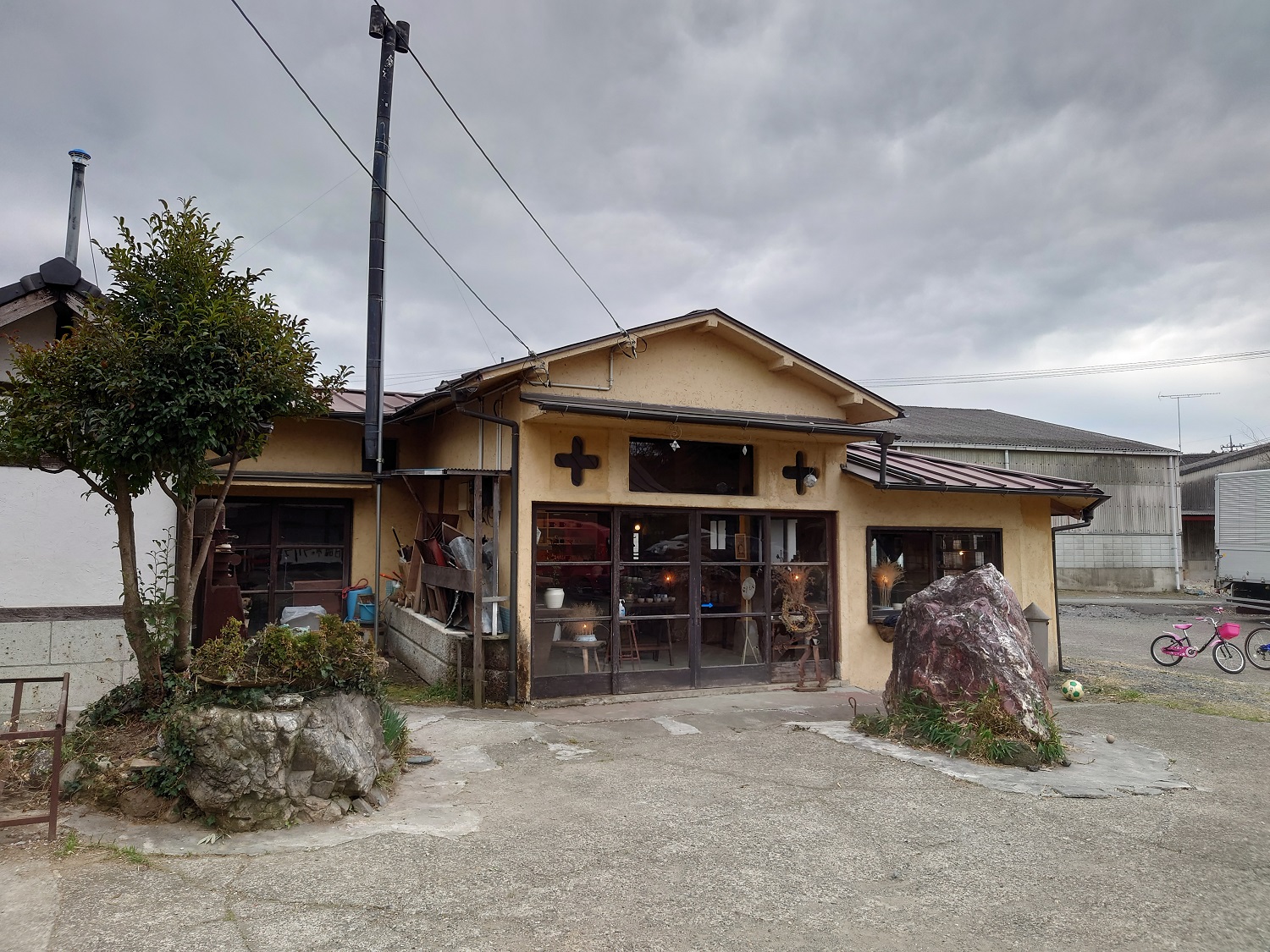
-- After graduating from art school, you went on to become a ceramic artist?
Kenmoku: Yes, I did. After graduating from art school, I had to go back to Tokyo, where I taught pottery at a pottery school in Shinjuku and worked on making tableware for a famous Japanese-style restaurant. I did that for about two years, but I began to question the idea of working with clay from the 10th floor of a building in Shinjuku, so one day, I decided to leave Tokyo and go to Kasama to apprentice under Motohiko Ito, who was also my favorite ceramic artist. However, I was turned down because he already had an apprentice. As I slowly walked back to the station in disappointment, I passed by a house where a child was playing in the yard, and there was a goat there too. A man stepped outside the house and said to me, "You don't often see a woman walking by herself down the road here in the countryside." That was the potter Eiichi Kojima. At that time, I was still working as a Japanese teacher and doing pottery on the side. I told him that I had visited Mr. Ito and been rejected as an apprentice, and he replied, "I don't mean as an apprentice, but why don't you come work for me?" His wife, children, and Mr. Kojima himself were all very friendly people, and I thought, "Working for Kojima-sensei would be good too." I went home and talked to my parents about it, and they instantly recommended that I take up the offer. I quit the pottery class in Shinjuku and went to study pottery at Kojima-sensei's place in Kasama.
I rented an apartment near Mr. Kojima's house, about 10 square meters with a kitchen and shared bathroom, for just 4,500 yen per month, although this was about 40 years ago. Kojima-sensei let me study under him while I also studied glazing at another place. But Kojima-sensei was still young, so he was more like a colleague than an apprentice's master. I stayed in Kasama for about two years. After that, I got an opportunity to move to Mashiko. It was the potter Etsuro Kotaki, my great senpai (senior), who gave me the chance to move to Mashiko. I was greatly influenced by Mr. Kotaki's work. His work has great taste, and I love his forms and designs. He also uses unique glazes and the finished pieces are amazingly graceful. I don't think I would have come to Mashiko if it weren't for Mr. Kotaki. When I went to visit him, he would roast coffee beans on the stove, and I still remember the aroma of his coffee. It was really good coffee.
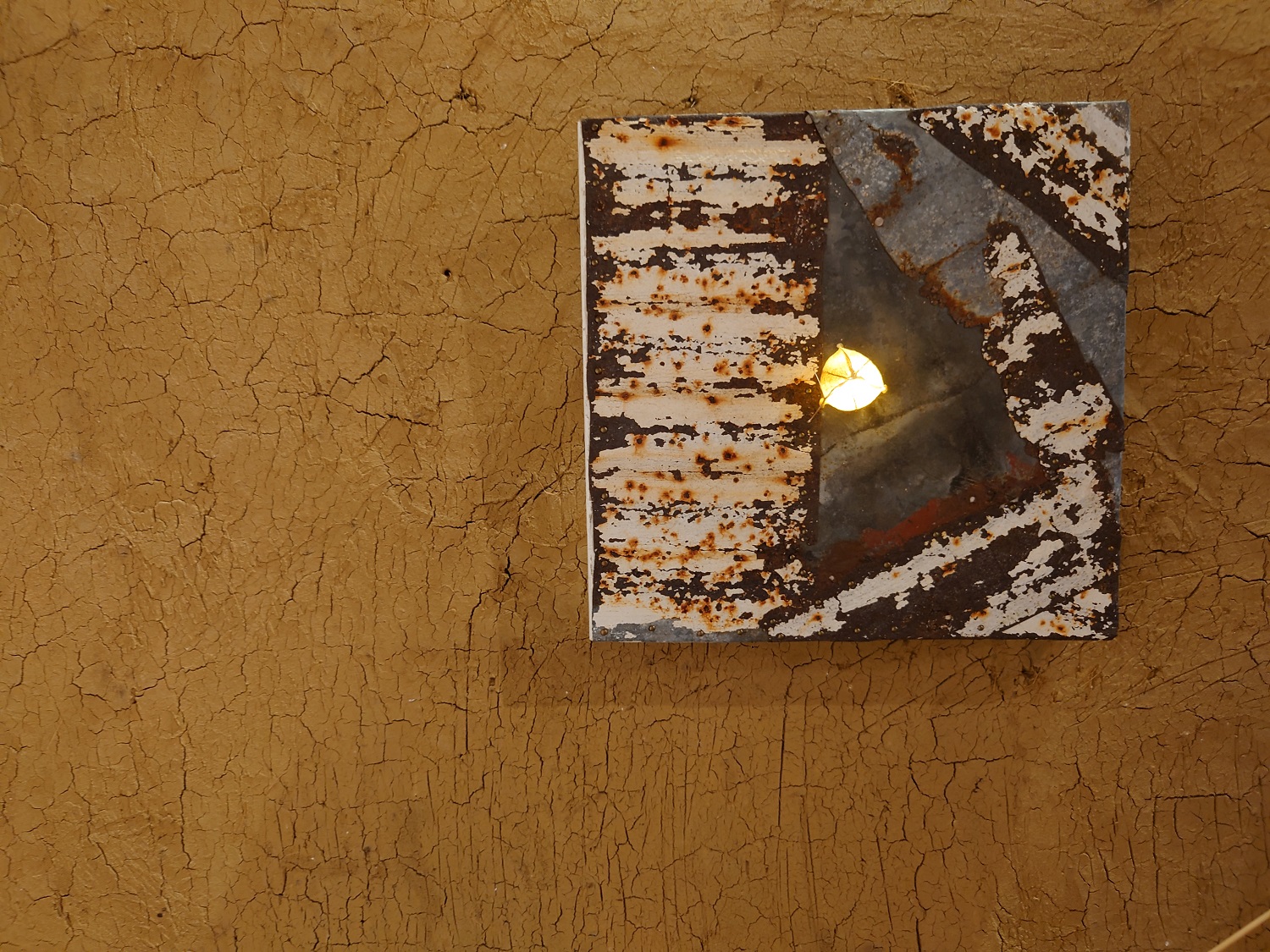
-- It looks like you met many wonderful people and were able to develop your own style.Were there any special turning points in your career as a ceramic artist?
Kenmoku: The Tohoku Earthquake on March 11, 2011. The oldest climbing kiln in Mashiko collapsed. I began to adopt the attitude of "safety first" for my pottery work. I also didn't want the risk of starting a fire. That's why I bought an electric kiln. People say that pieces made with electric kilns don't look as good as with wood-fired kilns, but these days, you can hardly distinguish them from wood-fired ceramics. The reason is because I specifically use Mashiko clay. Five or six years ago, there was some plumbing work being done near my house, and there was a layer of clay there, which the construction workers gave to me. I compared making pottery in a wood kiln and an electric kiln using that clay, and I found that the electric kiln produced the colors I was aiming for. They all ended up looking so beautiful that I couldn't believe they were fired in an electric kiln. I think it must have been because they became good friends with the electric kiln. Ever since I started using electric kilns, all of my stress has disappeared. I was stressed from thinking, "What if there is an earthquake?" or "What if there is a fire?" while firing. Now I can fire with a sense of peace and not have to think about any of those things.
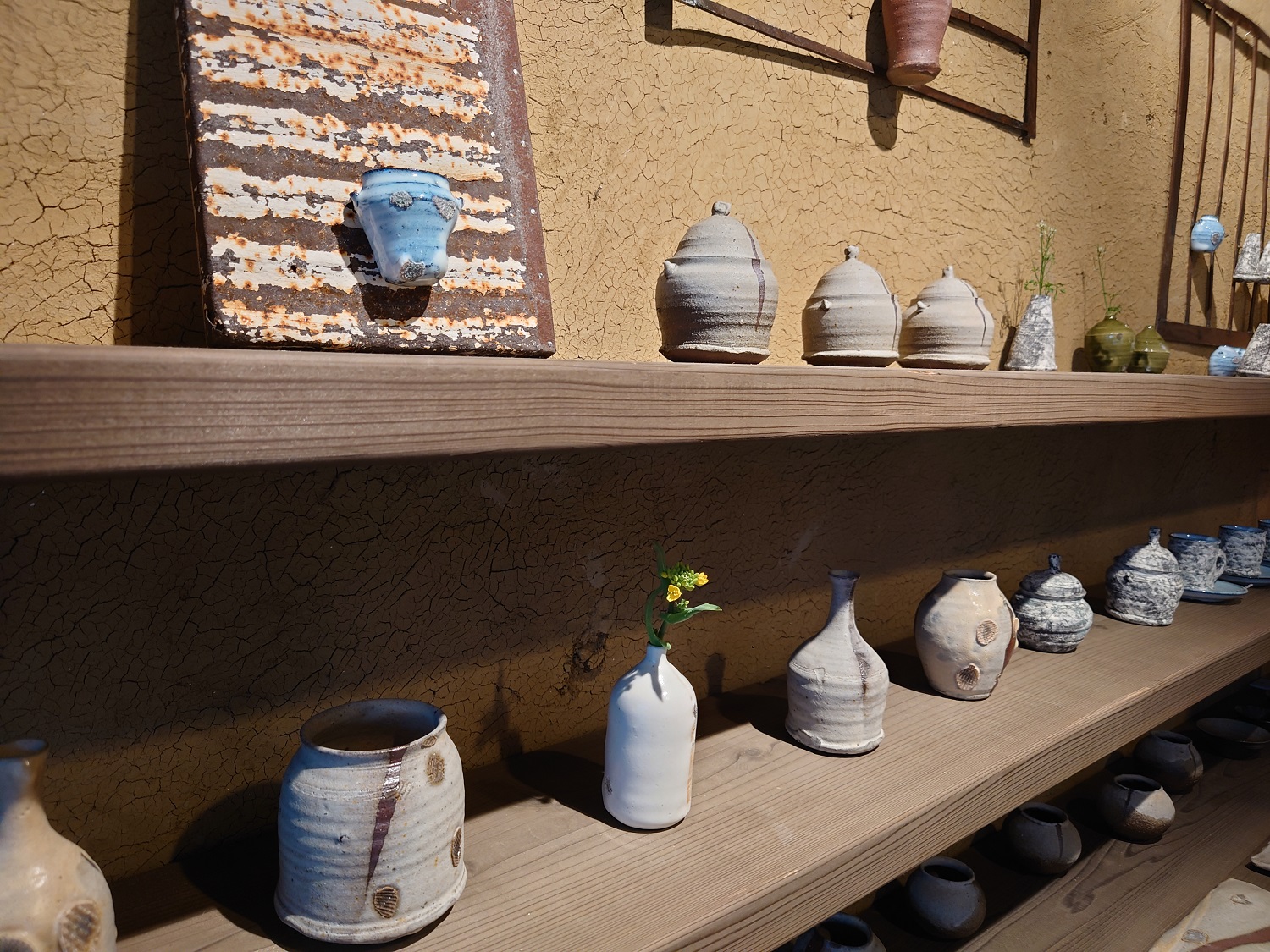
-- It has been 40 years since you came to Mashiko. Have there been any changes in Mashiko pottery?
Kenmoku: Mashiko is a town where people come and go as they please. During Shoji Hamada's (1894-1978) time, folk art was the mainstream, but after he passed away, the younger generation started to make and exhibit works different from that style of Mashiko pottery. There are many new and unique pieces, but at the same time, everyone copies the best-selling pottery... That results in a loss of individuality. Of course, if something sells well, it's because consumers want that. I understand that people latch onto trends because they sell well, but I would like people to place more value on their own individuality.

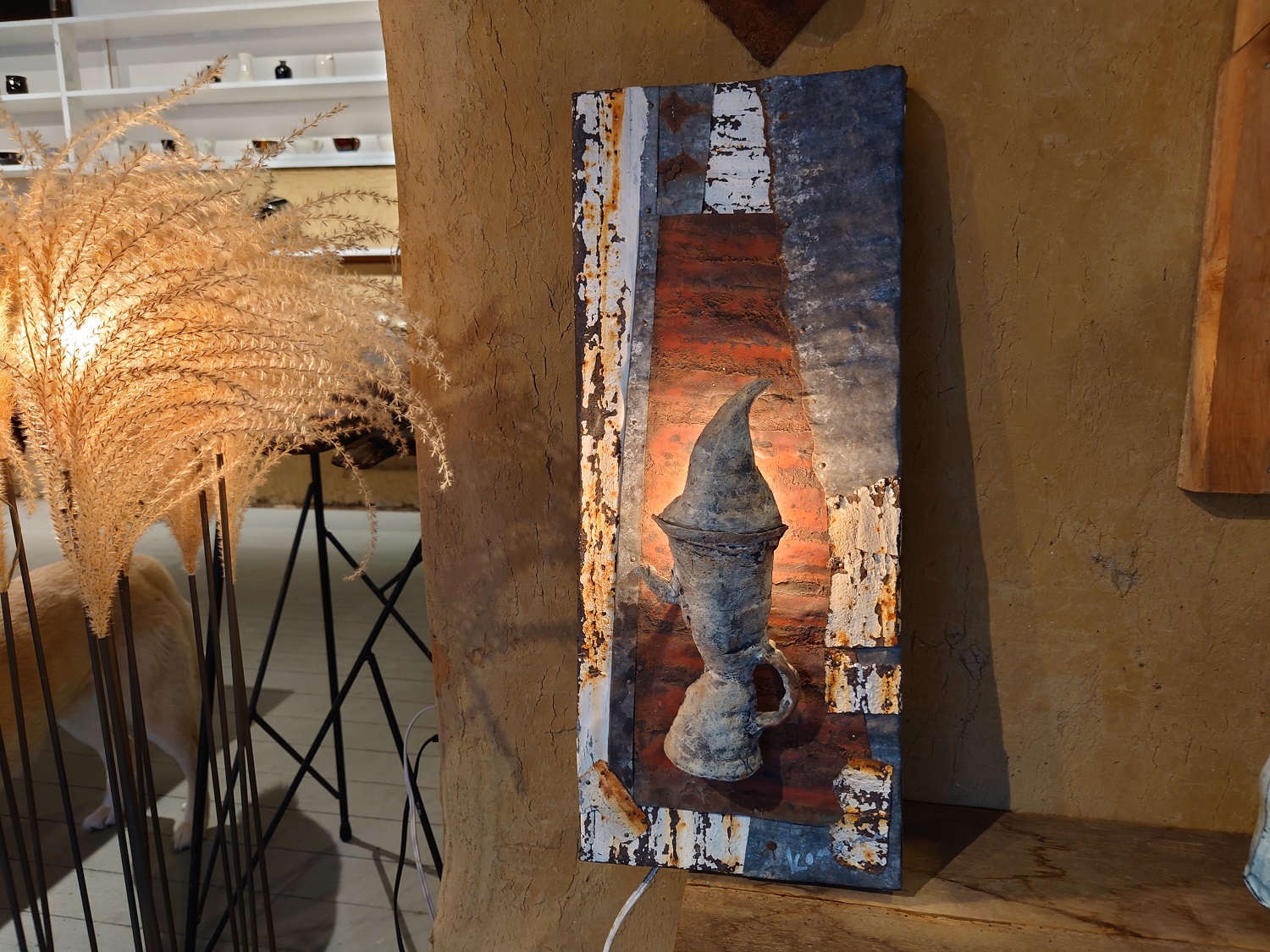
—Finally, can you tell us about the appeal of Mashiko ware?
Ohta: In the present day, it’s unbelievably difficult to even define Mashiko ware. There’s no clear definition like there is for Bizen ware. In a certain sense, Mashiko ware is an arena of unrestrained competition. It’s a virtue of Mashiko that it will accept any kind of piece by anyone. The only thing I can say for certain is not allowed is copying. It has to be your own original work. Between that and Japan’s long tradition, I think it’s better to create based on concepts derived from Japanese tradition. I’m not comfortable with incorporating European tableware motifs willy-nilly, just because European tableware is trendy right now. What about the wonderful culture of Japan, rooted in its natural features? I think it’s preferable to look to Japan’s natural features for motifs when creating pottery, in order to sustain its culture for the future.
For inquiries to artists, please contact the following email address

